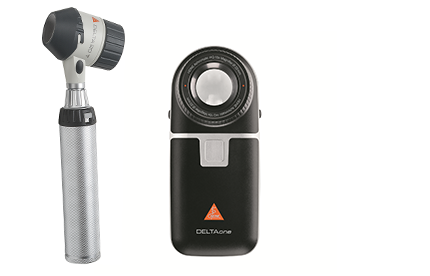Spitz naevus
Spitz naevus is a rare type of mole. It is a non cancerous (benign) type of mole.
What is a Spitz naevus?
A Spitz naevus is a rare type of mole that might have changes that look worrying but is  .
.
Spitz naevus mainly occurs in children and young adults, often before the age of 20. They can develop in older people, but it is less common.
The mole often looks like a small pink round bump, but sometimes the colour can be reddish brown, dark brown, or black. They can develop anywhere on the skin but are most commonly seen on the face or legs.
You should see your GP if you notice a change in your skin that isn't normal.
Your GP might arrange for you to see a skin specialist called a dermatologist. Your GP or skin specialist is likely to look at your mole using a dermatoscope. A dermatoscope is a handheld instrument, a bit like a magnifying glass. It can make things bigger (magnify) by up to 10 times.
Looking at a mole with a dermatoscope can help doctors decide if a mole needs to be removed.

Causes of Spitz naevus
It is not known why some people get Spitz naevus. More research is needed to understand what causes the development of a Spitz naevus.
Treatment for Spits naevus
Your doctor may monitor the area or recommend you have it removed.
Monitoring
Your specialist might recommend monitoring the lesion over time. How frequently you have this can vary from person to person. But you might see your specialist every 3 to 6 months or it may be longer.
It’s important that you see your GP or specialist urgently if you notice any changes in the mole before your next follow up appointment.
It might help to have a photo of the mole. If you can it's a good idea to put a ruler or tape measure next to the area when you take the photo. This gives you a more accurate idea about its size and can help you tell if it's changing. You can then show these pictures to your doctor.
Removing a Spitz naevus
You might have the area removed. For some people, a Spitz naevi can look so much like melanoma or other type of skin cancer that it can be very difficult even for an expert to tell the difference. It is important for your specialist to confirm what it is.
Because of this, doctors often remove a Spitz naevus together with a border of healthy tissue around it. The aim is to ensure the removal of the whole of the lesion for examination by a .
.
Risk factors for melanoma
We can’t say what your individual risk of getting a melanoma or another suspicious mole is likely to be. Certain people are more at risk of developing melanoma.
These are people who:
- are fair skinned and blue eyed
- have lots of freckles
- have lots of moles (more than 100)
- tend to burn easily in the sun
- have a family history of melanoma
Speak to your GP if you have any concerns about your risk of developing melanoma.
Staying safe in the sun
It is important to protect your skin in the sun. There are things you can do to reduce your risk of sunburn.
- Spend time in the shade, especially between 11am and 3pm in the UK.
- Wear suitable clothing to protect your skin from the sun such as long sleeved tops, trousers, long skirts and wide brimmed hats.
- Wear a sunscreen with at least SPF 30 and 4 or 5 stars. Use it generously, reapply regularly and use together with shade and clothing.



